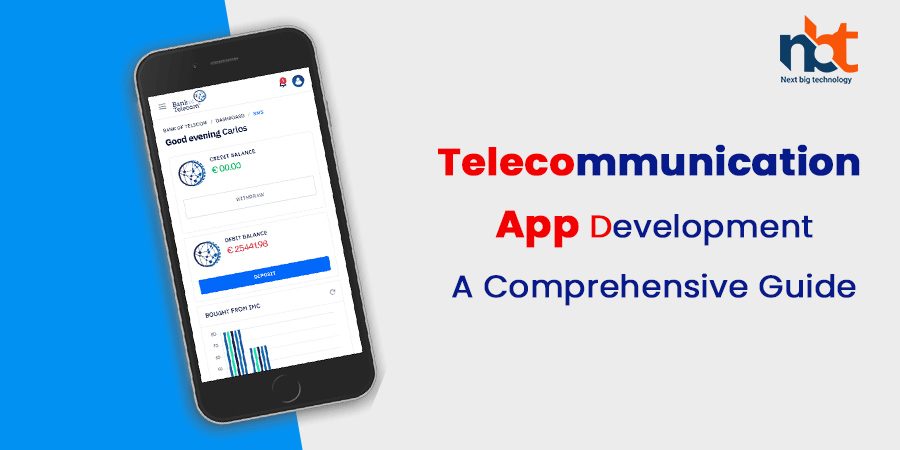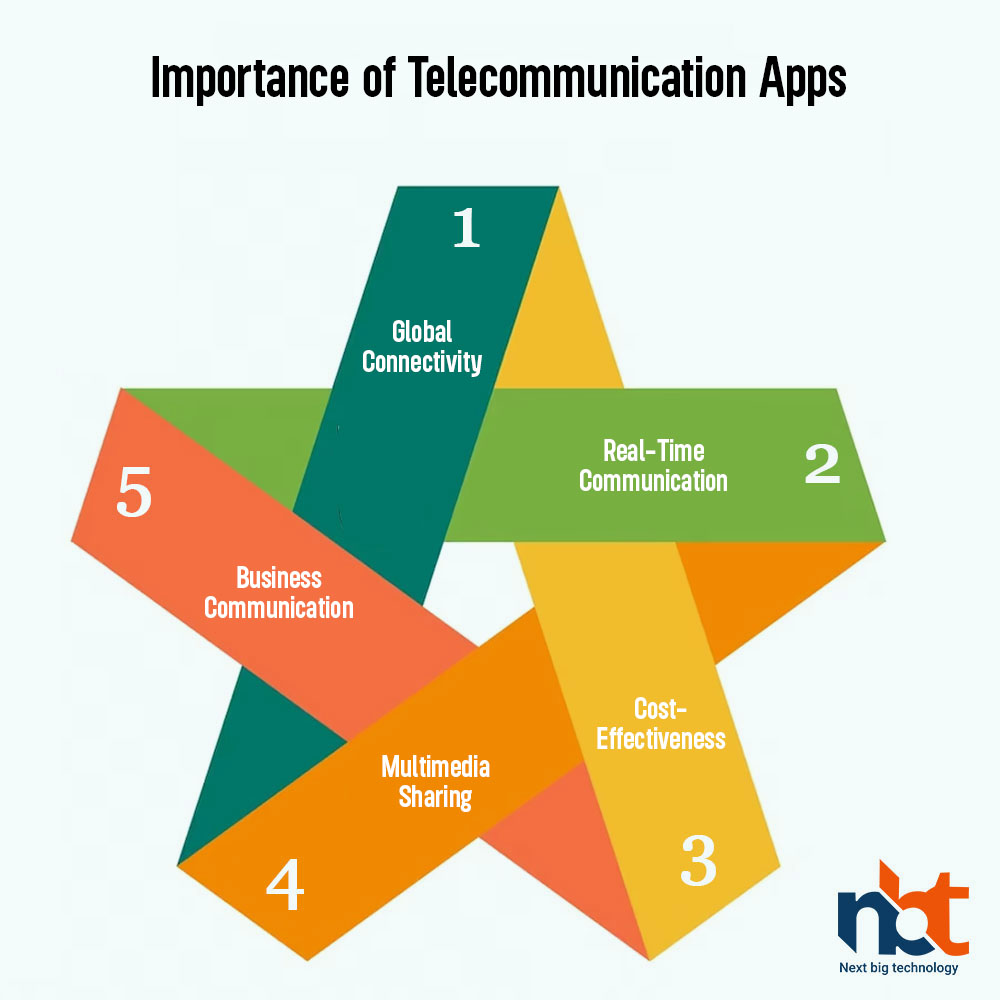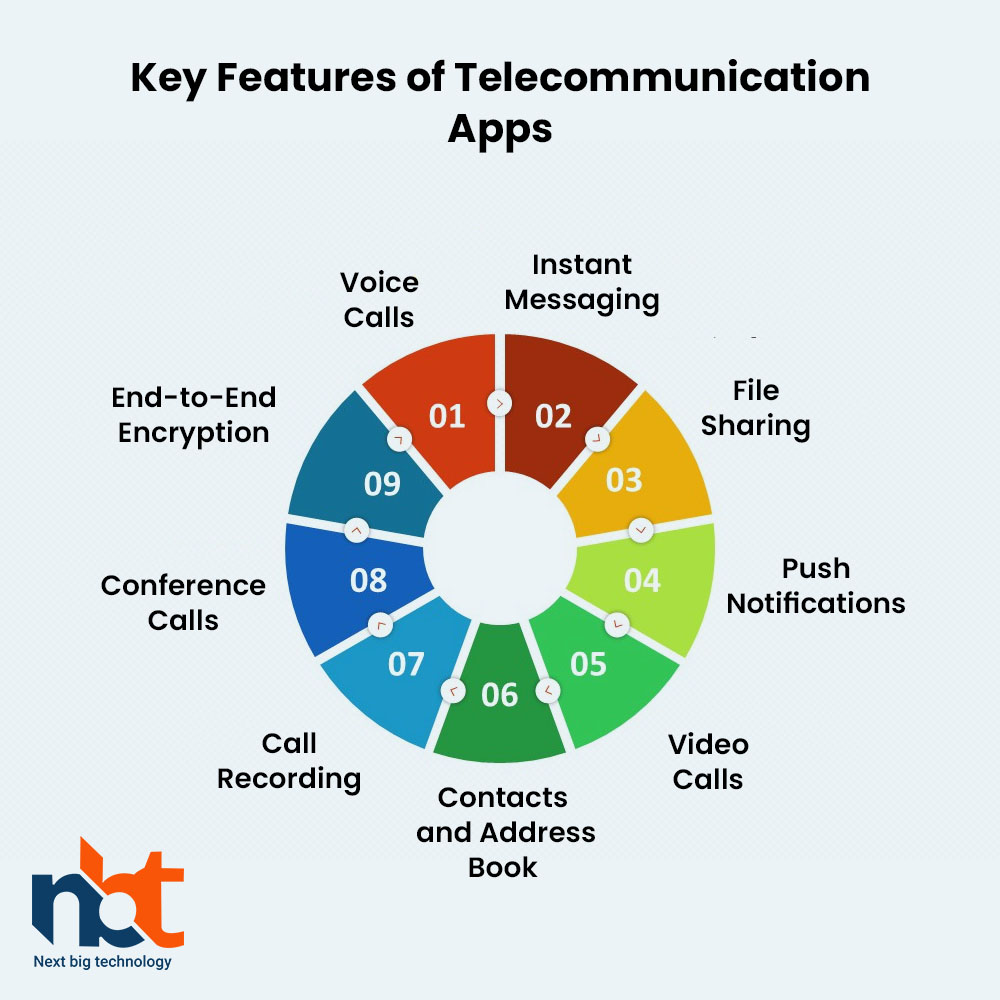The world of telecommunications has evolved dramatically with the advent of mobile and internet technologies. Telecommunication apps have become an integral part of modern communication, enabling people to connect seamlessly across distances. This comprehensive guide explores the intricacies of telecommunication app development, covering its importance, features, development process, and more.
Table of Contents
Introduction to Telecommunication App Development
- Understanding the Role of Telecommunication Apps in Modern Communication
- Exploring the Impact of Mobile and Internet Technologies
Importance of Telecommunication Apps
Global Connectivity
- Bridging the Gap between Geographical Distances
- Facilitating Instant Communication Anywhere in the World
Real-Time Communication
- Enabling Real-Time Voice, Video, and Text Conversations
- Supporting Both Personal and Professional Communication
Cost-Effectiveness
- Reducing Costs of Long-Distance Calls and International Messaging
- Offering Free or Low-Cost Communication Alternatives
Multimedia Sharing
- Facilitating Sharing of Images, Videos, Documents, and Location
- Enhancing User Engagement and Interaction
Business Communication
- Transforming Business Communication with Virtual Meetings and Conferencing
- Enabling Remote Work and Collaboration
Key Features of Telecommunication Apps
Voice Calls
- Offering High-Quality Voice Calls Over Mobile and Internet
- Ensuring Clear Audio and Minimal Call Drops
Video Calls
- Enabling Face-to-Face Video Conversations in Real Time
- Supporting Group Video Calls for Multiple Participants
Instant Messaging
- Providing Text Chat for Quick and Informal Communication
- Supporting Emojis, Stickers, and Multimedia Messages
File Sharing
- Allowing Users to Share Documents, Images, and Videos
- Enhancing Collaboration by Sending Relevant Files
Push Notifications
- Sending Notifications for Incoming Calls and Messages
- Keeping Users Informed Even When the App Is Closed
Contacts and Address Book
- Managing and Organizing Contact Information
- Offering Quick Access to Saved Contacts
Call Recording
- Enabling Users to Record Important Calls for Reference
- Offering Playback and Sharing Options
Conference Calls
- Supporting Multi-Participant Conference Calls
- Facilitating Virtual Meetings and Collaborative Discussions
End-to-End Encryption
- Ensuring Secure and Private Communication
- Encrypting Conversations to Prevent Unauthorized Access
Telecommunication App Development Process
Idea and Conceptualization
- Defining the Purpose and Scope of Your Telecommunication App
- Identifying Target Audience and User Needs
Market Research and Analysis
- Studying Competitors and Existing Telecommunication Apps
- Identifying Market Gaps and Opportunities
Choosing the Right Platform
- Selecting App Development Platforms (iOS, Android, Web)
- Considering User Base, Preferences, and Market Share
UI/UX Design
- Designing User-Centric Interfaces for Intuitive Navigation
- Creating Engaging Interfaces for Calls, Messages, and Contacts
Development
- Implementing Voice and Video Calling Functionality
- Integrating Instant Messaging, File Sharing, and Multimedia Features
Testing and Quality Assurance
- Conducting Rigorous Testing of Voice and Video Quality
- Ensuring Cross-Platform Compatibility and Performance
Security and Privacy Measures
- Implementing End-to-End Encryption for Secure Communication
- Safeguarding User Data and Conversations
Beta Testing
- Launching a Beta Version to Collect User Feedback
- Refining Features and Addressing Bugs
Choosing a Development Approach
Native App Development
- Building Separate Apps for iOS and Android Platforms
- Utilizing Platform-Specific Features and Performance
Cross-Platform Development
- Developing a Single Codebase for Multiple Platforms
- Using Frameworks like React Native, Flutter, Xamarin
Web-Based Telecommunication
- Creating Web Applications for Communication
- Allowing Users to Make Calls and Send Messages from Browsers
Integration with Backend Services
Server Infrastructure
- Setting Up Servers for Call Routing and Signaling
- Managing User Authentication and Data Storage
Real-Time Communication Protocols
- Integrating Protocols like SIP (Session Initiation Protocol) for Calls
- Using WebRTC (Web Real-Time Communication) for Browser Calls
User Authentication and Security
- Implementing Secure User Authentication Mechanisms
- Incorporating OAuth, JWT, or Two-Factor Authentication
User Experience and Interface Design
Intuitive User Interface (UI)
- Designing User-Friendly Interfaces for Calls and Messages
- Implementing Clear Icons and Navigation Elements
Contact Management
- Creating Address Books for Efficient Contact Organization
- Enabling Search and Quick Access to Contacts
In-App Communication
- Implementing Smooth Transition from Calls to Messages
- Providing Options for Group Calls and Chats
Push Notifications
- Integrating Push Notifications for Incoming Calls and Messages
- Notifying Users Even When the App Is Minimized
Call History and Logs
- Displaying Call History and Detailed Call Logs
- Enabling Users to View, Delete, and Return Calls
Testing and Quality Assurance
Voice and Video Quality Testing
- Conducting Rigorous Testing of Audio and Video Quality
- Ensuring Clear and Uninterrupted Communication
Network Compatibility Testing
- Testing the App Under Different Network Conditions
- Ensuring Consistent Performance on Various Networks
Bug Testing and Debugging
- Identifying and Rectifying Glitches, Crashes, and Errors
- Ensuring Stable and Reliable App Performance
Launch and Deployment
App Store Submission
- Preparing App Store Listings and Descriptions
- Ensuring Compliance with App Store Guidelines
Marketing and Promotion
- Developing a Marketing Strategy to Introduce Your App
- Using Social Media, Influencers, and Online Advertising
Monitoring and Analytics
- Implementing Analytics Tools for User Engagement Tracking
- Gathering Insights for Continuous Improvement
Post-Launch Support and Maintenance
Regular Updates
- Releasing Updates for Bug Fixes and Enhancements
- Responding to User Feedback and Suggestions
Customer Support
- Providing Effective Customer Support Channels
- Addressing User Queries and Technical Issues
Monetization Strategies
Freemium Model
- Offering Basic App Features for Free and Premium Features for Payment
- Providing Upgrade Options for Advanced Functionality
In-App Purchases
- Selling Virtual Goods, Stickers, or Premium Features
- Enhancing User Experience with Additional Content
Subscription Model
- Offering Subscription Plans for Continuous Access
- Providing Monthly, Annual, or Tiered Subscription Options
Security and Privacy Considerations
Data Encryption
- Implementing Encryption for Secure Data Transmission
- Ensuring End-to-End Encryption for Calls and Messages
Privacy Regulations
- Adhering to Data Protection Laws and User Consent
- Ensuring User Data Is Handled Responsibly
Conclusion
Telecommunication app development empowers users to connect, communicate, and collaborate seamlessly across distances. By following the insights provided in this comprehensive guide, you can navigate the complexities of creating a telecommunication app that caters to the evolving communication needs of individuals and businesses alike.




















